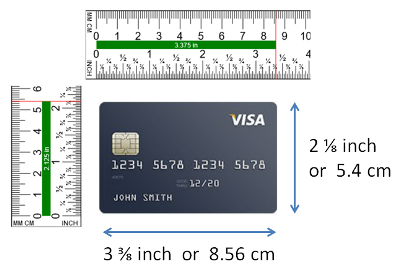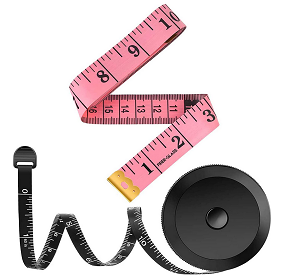
People Tree Size Chart
How to Measure
Bust
Place the tape measure under your arms, over your shoulder blades and across the fullest part of your bust. Remember to breathe out first.
Waist
Measure around your natural waist.
Hips
Measure around the fullest part of your bottom at the top of the leg.
Clothing
Clothing Size Chart
Measurement Unit: US (inch) | World (cm) | Both| Size | Numeric | Bust | Waist | Hip |
|---|---|---|---|---|
| Small | 8 | 33 inch 84 cm | 251/2 inch 65 cm | 36 inch 91 cm |
| Small | 10 | 35 inch 89 cm | 271/2 inch 70 cm | 38 inch 97 cm |
| Medium | 12 | 37 inch 94 cm | 291/2 inch 75 cm | 40 inch 102 cm |
| Large | 14 | 39 inch 99 cm | 311/2 inch 80 cm | 42 inch 107 cm |
| Large | 16 | 41 inch 104 cm | 331/2 inch 85 cm | 44 inch 112 cm |
International Conversion Size Chart
Measurement Unit: US (inch) | World (cm) | Both| UK | Germany | France | Italy | US | |
|---|---|---|---|---|---|
| 6 | 32 | 34 | 38 | 2 | |
| 8 | 34 | 36 | 40 | 4 | |
| 10 | 36 | 38 | 42 | 6 | |
| 12 | 38 | 40 | 44 | 8 | |
| 14 | 40 | 42 | 46 | 10 | |
| 16 | 42 | 44 | 48 | 12 | |
| 18 | 44 | 46 | 50 | 14 |
Comments
Compare Size Charts
To compare with another brand/style, please select the options below.

Visit official website: https://www.peopletree.co.uk
People Tree Ltd. is a fair trade apparel company founded in 1991 by James and Safia Minney in Tokyo, Japan. The company is based in both London and Tokyo.
In 1991, British born James and Safia Minney created Global Village, an environmental campaigning NGO, in Japan Global Village was the foundation of their own fashion label.
People Tree began as a clothing catalogue which featured hand woven and natural dyed hand bags, clothing, and clogs made by women from Bangladesh. The initial start up was incredibly difficult as it was the first of its kind. Safia once said, "When I started out, I wasn't very realistic on how difficult it would be to make People Tree work. We were investing in labour-intensive process while the industry was going in the other direction: mass-manufactured fashion, using synthetics instead of natural materials. We were dealing with very disadvantage people in remote places, and the business costs were huge. It was a massive undertaking, but it needed to be done."
In 1995, Fair Trade Company was formed as a limited company and a shop was opened in the fashionable Jiyugaoka district, in Tokyo. In 1997, Safia Minney added a Fair Trade Fashion Collection, using eco-textiles, including organic cotton, to the products sold by Fair Trade Company, and the first People Tree collection was launched. People Tree was working closely with textile artisan groups to help them meet environmental standards and develop their market potential, with two full-time designers at People Tree. In 1998, the first flagship store in Tokyo.
In 1999, People Tree's business expanded to the UK where the brand formed a partnership with Co-operative Group. In 2001, People Tree launched in the United Kingdom. By 2004, the company expanded into 20 different countries and turned over $1.79 million. In 2005, People Tree Japan launched its first 'prototype franchise' store in Tokyo. In 2006, then-CEO Safia Minney persuaded Top Shop executives to take People Tree into Topshop as a concession.
People Tree designs, manufactures, and markets its own label and works in collaboration with designers like Orla Kiely and Bora Aksu, as well as London's V & A Museum.
Currently, People Tree is sold in 500 stores around the world including ASOS.com. The company also runs its own e-commerce business.
People Tree implemented the first supply chain for organic cotton and was the first organization in the world to achieve GOTS (Global Organic Textile Standard) certification for a supply chain located in the developing world, and sees its mission evolving to help tackle additional global challenges. As People Tree CEO James Minney says, "There is enough food, and enough shelter, for everyone alive on the planet today. We have found out that we can make big changes to how we live, when we decide to. Let's make the changes we want for a more human, more inclusive, more sustainable world!"
Length Conversion
Note: 1 inch = 2.54 cm, 1 cm = 0.394 inch, 1 foot = 30.48 cm, 1 cm = 0.033 foot, 1 foot = 12 inch, 1 inch = 0.083 foot
Essential Tools
If you do a lot of online apparel shopping, accurate body measurement using a tape measure is a must. The actual tape you choose doesn’t matter that much. This measuring tape set has two double-sided, 60 inch (150 cm), durable tape measure in pink and black. They are small and light pocket-size measuring tapes, and they have accurate, large and clear markings in both inches and centimeters, which are very easy and convenient to read. They are also great for body measurement, sewing, tailoring, weight loss tracking, or measuring any curved surface.
How to measure without a ruler or tape measure?
If you don't have a ruler or tape measure handy, you can try to measure with a standard credit card, which has a width of 3 ⅜ inch or 8.56 cm and a height of 2 ⅛ inch or 5.4 cm.

